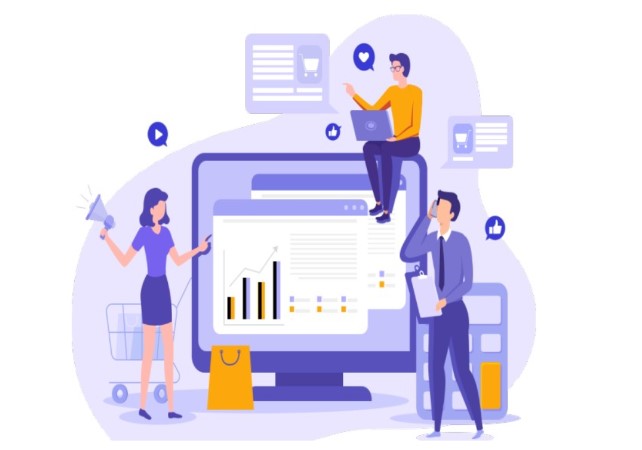
Businesses have always been interested in finding new and effective ways to market their products and services. Did you know that businesses who send personalized emails see a six times higher click-through rate than those who don’t? Or that 73% of customers prefer to receive personalized content from brands they do business with? In fact, a recent study showed that more than three-quarters of businesses are using some form of personalization in their marketing campaigns. And for good reason – personalization has been shown to increase conversion rates by up to 300%.
Over the years, there have been many different strategies that have been used. Yet, one of the most successful has been personalized marketing. This type of marketing is based on understanding the customer’s individual needs and preferences. It has become increasingly popular in recent years, and for good reason- it works! In this blog post, we will discuss the rise of personalized marketing and how it is benefiting businesses all over the world.
The relation between segmentation and personalization
There is a lot of talk these days about the importance of personalization in marketing. And for good reason – when done correctly, personalization can lead to significantly better results for businesses. But what many people don’t realize is that personalization is only possible if you first segment your audience.
In order to create an effective marketing strategy, it is important to tailor your messaging to specific segments of your audience. This is known as personalization. Personalized marketing messages are more likely to resonate with customers than generic ones, and can lead to increased sales and loyalty. In addition, using customer data for segmentation can help you target specific customers with the most relevant offers, increasing the likelihood that they will convert.
Did you know that 91% of consumers are more likely to shop with brands who provide relevant offers and recommendations? Or that 72% of them say they only engage with personalized messages? These statistics show the importance of personalization in marketing, yet many companies still don’t take advantage of it.
Personalized messages are not only more likely to be read and acted on, but they can also lead to increased sales and loyalty. In addition, using customer data for segmentation can help you target specific customers with the most relevant offers, increasing the likelihood they will convert.
Know how appICE can help you in Implementing personalization and segmentation into your marketing strategy
Different ways how segmentation adds value to personalization
Segmentation is a powerful tool that can help marketers deliver more personalized experiences to their customers. By understanding customer behavior, interests, and intent, marketers can create segments that are more likely to convert or engage with their content. Ultimately, this leads to improved sales and a better overall customer experience.
In order to deliver truly personalized experiences, marketers need to go beyond simple demographic segmentation and consider other factors such as behavior, interests, and intent. Here are three different ways that segmentation can add value to personalization:
- By understanding customer behavior, marketers can segment customers based on their likelihood to purchase or convert. This allows for more targeted marketing messages and offers, which can lead to improved conversion rates.
- By considering customer interests, marketers can create segments of customers with similar interests. This allows for more relevant content and recommendations, which can improve customer engagement.
- By analyzing customer intent, marketers can better understand what customers are looking for and provide them with the most relevant information. This helps to improve the overall customer experience and can lead to more sales
Indeed, Mckinsey estimates, that brands with access to data(first-party) may see a lift upto 25%
How personalized marketing is bringing a difference?
Personalized marketing is not a new concept. It has been around for many years, but it was only recently that businesses began to really understand its potential. In the past, businesses would send out mass advertising campaigns that were designed to reach as many people as possible. However, they often found that these campaigns were not very effective because they did not take into account the individual needs of each customer. As a result, many people simply ignored the ads or tuned them out completely.
With personalized marketing, businesses are able to target their advertising specifically to those individuals who are most likely to be interested in what they have to offer. This type of marketing is much more effective because it resonates with customers on a personal level. They feel like the business is speaking directly to them, and this makes them much more likely to take action.
Personalized marketing is also beneficial for businesses because it allows them to build better relationships with their customers. When customers feel like they are being treated as individuals, they are more likely to be loyal to the businesses that treat them well. This type of marketing also helps businesses to collect valuable data about their customers. Hence, they can better understand their needs and preferences.
There are many different ways that businesses can personalize their marketing campaigns. One of the most popular methods is through email marketing. With email marketing, businesses can send out customized messages to specific groups of people based on their interests and preferences. This type of marketing is very effective. It allows businesses to reach a large number of people with a very targeted message.
No Comments